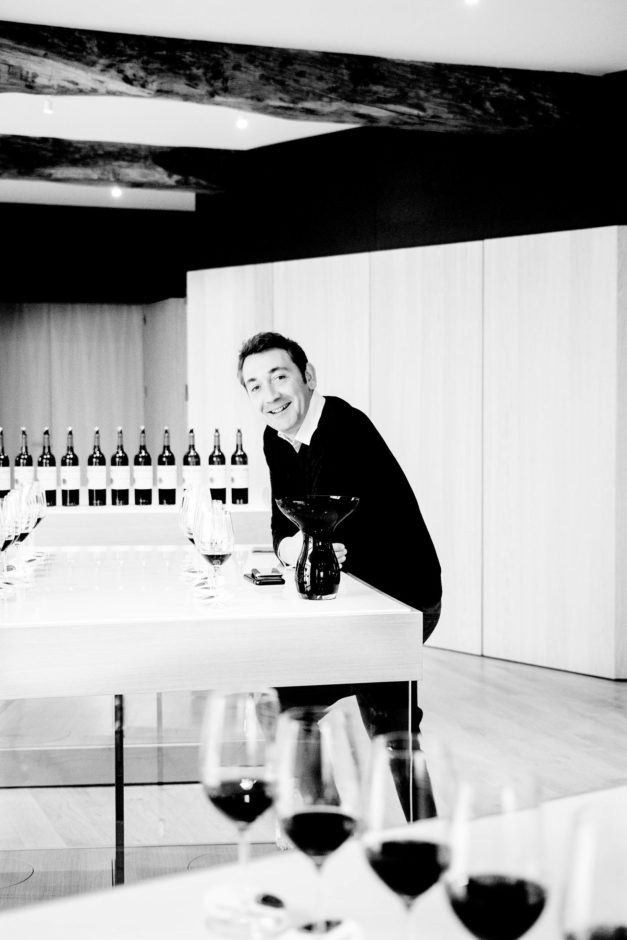09th May 2022
Not to be different, but Thierry Manoncourt was different. Unashamedly bucking trends, questioning the status quo, unafraid to speak his piece—different. With an eloquent, gentlemanly demeanor that belied his stubbornness, Manoncourt certainly wasn’t short on opinions nor passion for his vineyard.

Not to Be Different, But
My last encounter with the former owner of Château Figeac was in Abu Dhabi in February 2010, where I was co-hosting a Figeac tasting and dinner with him and Dr. N.K. Yong (also since sadly passed and greatly missed). We tasted Figeac vintages from 1986 to 2005. I found the 2005—a vintage that I loved and knew well—perplexing. As he spoke about the wine, there was no question that Manoncourt could so clearly see Figeac in the glass, whereas I could only find flaws and edges. The more I swirled and tasted, the more it was like trying to catch sight of something twinkling in the peripheries of my vision, but that defied focus. After the tasting, when Manoncourt discovered I’d started working for Robert Parker, he didn’t hold back. A few years prior, he had stopped sending his wines to Parker for review. He told me that he didn’t think that Parker understood his wines, understood Figeac, understood him. After tasting the 2005, I’m not sure I did either, which is not a criticism.
I recently asked Frederic Faye, the current managing director of Figeac, what he thought of Manoncourt’s style. “I knew Thierry very well,” he said with a sad smile. Faye then eschewed the word “style,” referring rather to Thierry’s obsession. “In fact, we had the same obsession. An obsession with the DNA of Figeac.”
In Manoncourt’s mind, there was never any doubt that Figeac was every bit as great as his lauded 1er Grand Cru Classé A (at least then) neighbor, Cheval Blanc. It was a point he often stressed to whoever would listen. Thing is, he had a point.
“I should also note that the 1990 Figeac bears more than a casual resemblance to its renowned neighbor, Cheval Blanc,” concluded Robert Parker in one of his early reviews of Figeac. Then in his note on the 2000 vintage, he conceded, “When Figeac hits on all cylinders, one can understand why tasters believe it is as complex as Cheval Blanc.”
- Frederic Faye"I knew Thierry very well, in fact, we had the same obsession. An obsession with the DNA of Figeac."
As anyone who knows Burgundy knows, a few yards can make a world of difference when it comes to vineyard greatness. So, one should never assume that bordering sites have the same potential. This said, Cheval Blanc used to be part of the vast Figeac estate until the mid- 1830s when the now Cheval Blanc parcel was sold off.
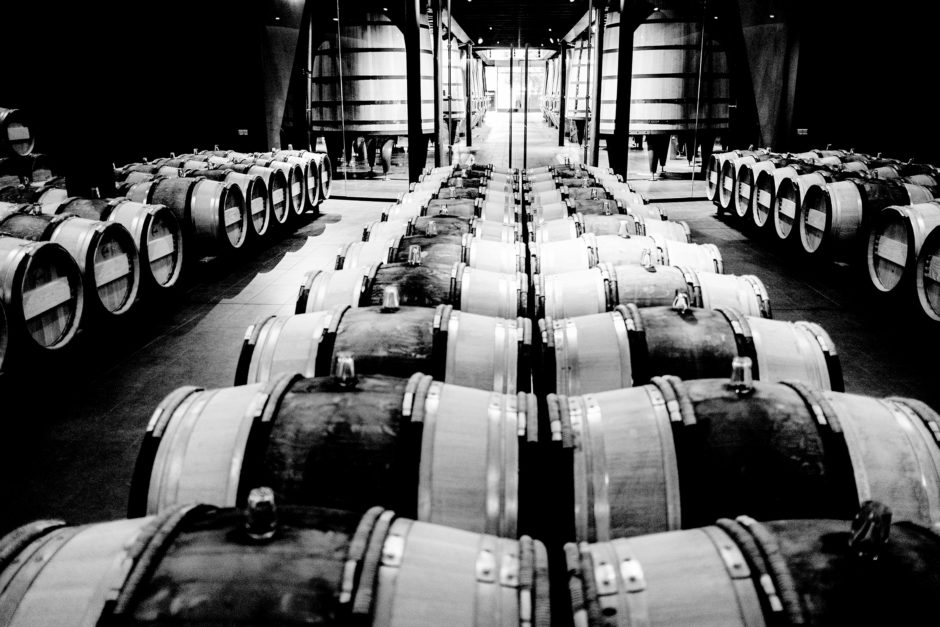
Located to the far west of the vast Saint-Émilion region, bordering Pomerol, neither Figeac nor Cheval Blanc enjoy a position on the hallowed limestone plateau as do most of the other great Premier Grand Cru Classé sites, nor do they benefit from the abundance of deep clays on the Pomerol plateau. These are lower-lying, frost-prone vineyards that possess a unique mélange of complex soil types, which are largely defined by free-draining gravel.
Manoncourt knew better. He knew Figeac.
When Thierry Manoncourt lost a significant portion of his vines to the devastating frost of 1956, he was forced to replant nearly 50% of the vineyard. He decided to replant differently. Rather than mainly planting Merlot with a small portion of Cabernet Franc, as was the norm, he created the unusual vineyard
composition, which remains today: Cabernet Sauvignon, Cabernet Franc, and Merlot in more or less equal proportions, slightly favoring the Cabernets.
Cabernet Franc was not unheard of on the Right Bank, but that amount was unusual. Cabernet Sauvignon plantings, however, were rare. It would have come
across as ludicrous to devote over a third of a vineyard in Saint-Emilion to this variety back then. Manoncourt knew better. He knew Figeac.
Figeac’s vineyard has just over 100 acres planted, all in one block surrounding the Château, all of it classified as Premier Grand Cru Classé B since the first classification in 1955. The area under vine includes three Günzian gravel mounds composed of quartz and flint over iron-rich blue clay (crass de fer). These mounds are a significant point of terroir difference since Günzian gravel is a lot more common in the Médoc and Pessac than in Saint-Émilion. Knowing
this, Cabernet Sauvignon in Saint-Èmilion doesn’t sound so crazy after all. Today, Cheval Blanc also has a little Cabernet Sauvignon planted on gravel and
more recently, others in the neighborhood have joined the club, including La Conseillante and L’Evangile.
Some profound wines were produced during Thierry Manoncourt’s era, many
that needed age to be appreciated, and they aged well. But other vintages were
not, to use Parkers’ words, “hitting on all cylinders.” The quality of Figeac was
inconsistent, which seemed to have as much to do with stubborn trend resisting
as with lack of precision in the vineyard and winery.
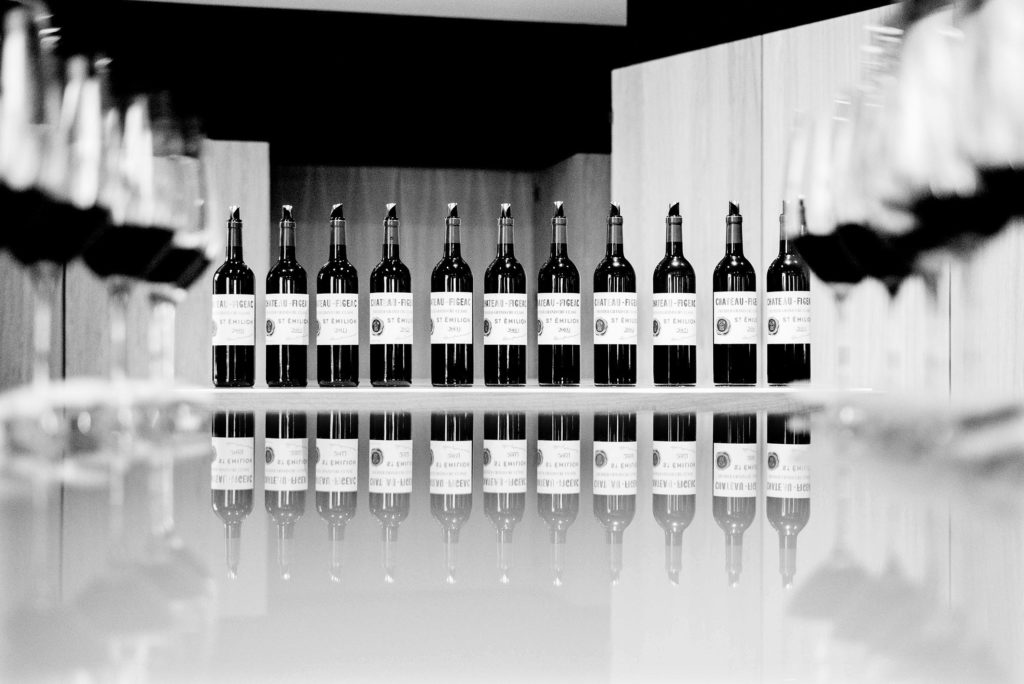
Faye likes to joke that he cleaned the windows on his first day, which he did.
Then one day, into the cellars walks twenty-one-year-old Frederic Faye, not yet finished with his winemaking and viticulture studies at Bordeaux University. Having done a brief stint under the tutelage of Michel Rolland, Frederic started as a trainee at Figeac in August 2002, under the guidance of Thierry Manoncourt. Faye likes to joke that he cleaned the windows on his first day, which he did.
After Thierry’s passing in August 2010, Frederic became technical director of the estate. In 2013, he became managing director. “We had to give attention to the vineyard first—Thierry understood this,” Faye told me. “We shared the same obsession to bring out the quality and DNA of Figeac. From 2015, we began working differently in the vineyard. We aimed for much more precision in the vineyard, harvesting more strategically, requiring the use of smaller vats. We harvest only when ripe, and we have lessened the extraction. We no longer add any sulfur dioxide during fermentation, only a little after malo-lactic.”
"I had to make strategic decisions"
- Frederic Faye
Of the 2019 vintage, Faye commented, “During the picking, I had to make strategic decisions. I had been working here for 17 years. I knew some plots of Merlot were ready. We needed this to maintain the brightness of the fruit. Then I decided to wait for the rest of the Merlot - for the texture. It was so dry. The rain was necessary for the Cabernet - these vines really needed that late September rain. In the end, this year, I think I have picked the best Cabernet Franc that I have ever picked!”
The 2019 harvest at Figeac was drawn out over four weeks, starting on 13 September and finishing in mid-October. The result is simply breathtaking.
In recent years, the turnaround in the consistency of quality coming out of Figeac has been astonishing. Faye and consultant winemaker Michel Rolland certainly deserve a lot of credit. Still, the DNA of this estate was undoubtedly forged and nurtured to this current state over most of the 20th Century by Thierry Manoncourt. As Manoncourt keenly recognized and appreciated, the terroir here is singular—different from Cheval Blanc and, in certain vintages, maybe better. The composition of the three varieties, now in their prime of maturity (the average vine age is 35 years old), was an inspired decision of Manoncourt.
The genius of this decision is especially so considering the unforeseen impact of climate change, where Cabernet Sauvignon can better withstand hot, dry vintages, lending freshness and structure to the blends. Following the complete refurbishment of Figeac’s winery, finished in 2021, featuring state-of-the-art equipment, including forty smaller fermentation vats to allow multiple picks and vinifications, I expect the best is yet to come at this estate.
I do not give the 2019 Figeac 100 points because it is different. It just is.
Not to be different, but Figeac is different. Unconventionally composed, singularly forged, undeniably evocative - different.
–
Article & Reviews by Lisa Perrotti-Brown MW
Photos by Johan Berglund

PRODUCERS IN THIS ARTICLE
> Show all wines sorted by scoreMore articles

Pilcrow’s New Releases
18th Apr 2024
7 tasting notes
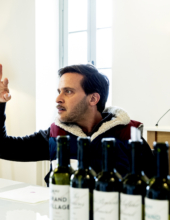
Bordeaux 2023 Primeurs Photo Essay
18th Apr 2024
0 tasting notes

Harlan Estate, BOND, Promontory 2021 and 2011
11th Apr 2024
14 tasting notes
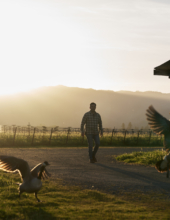
Favia 2012-2021
04th Apr 2024
17 tasting notes
Show all articles
